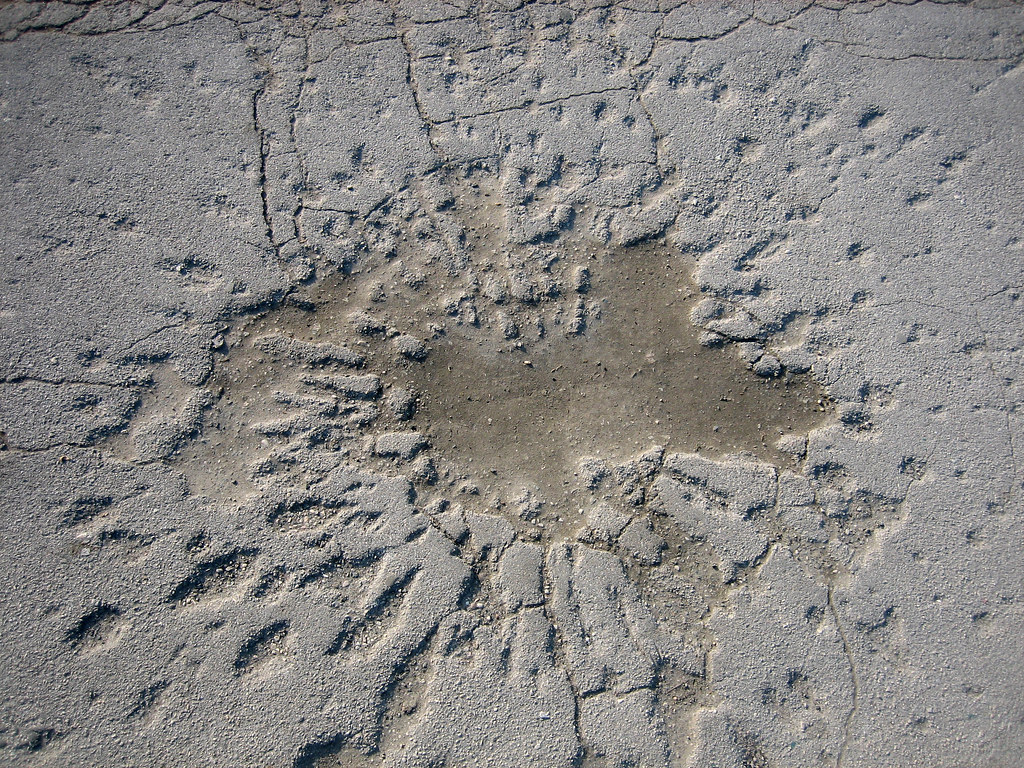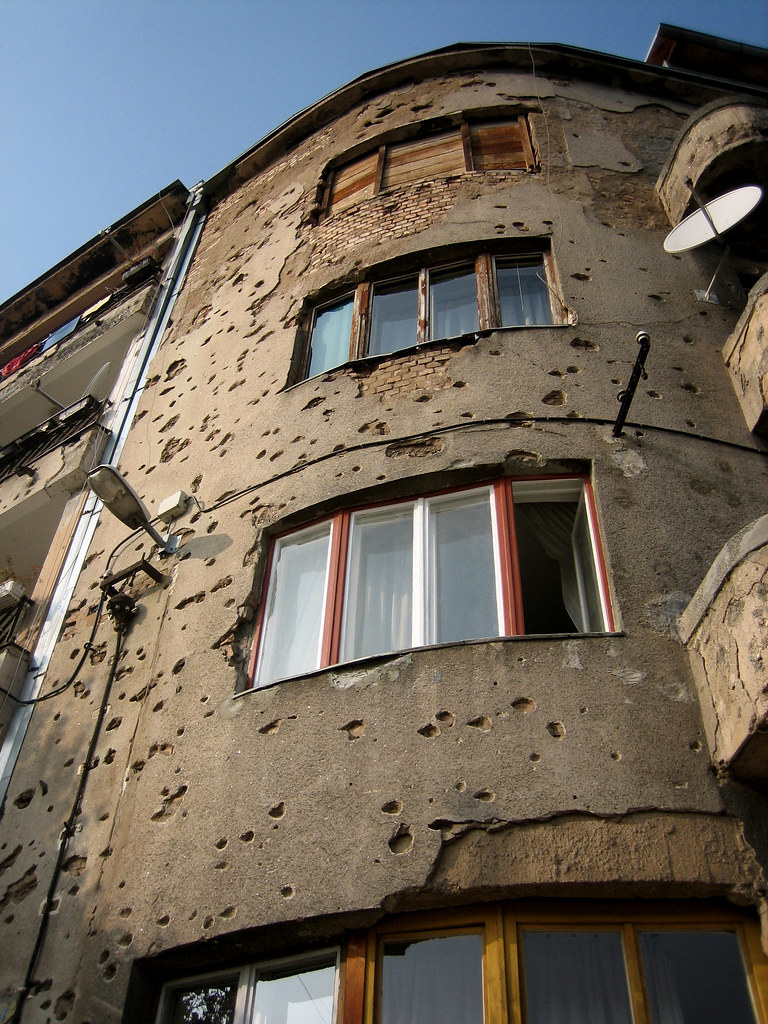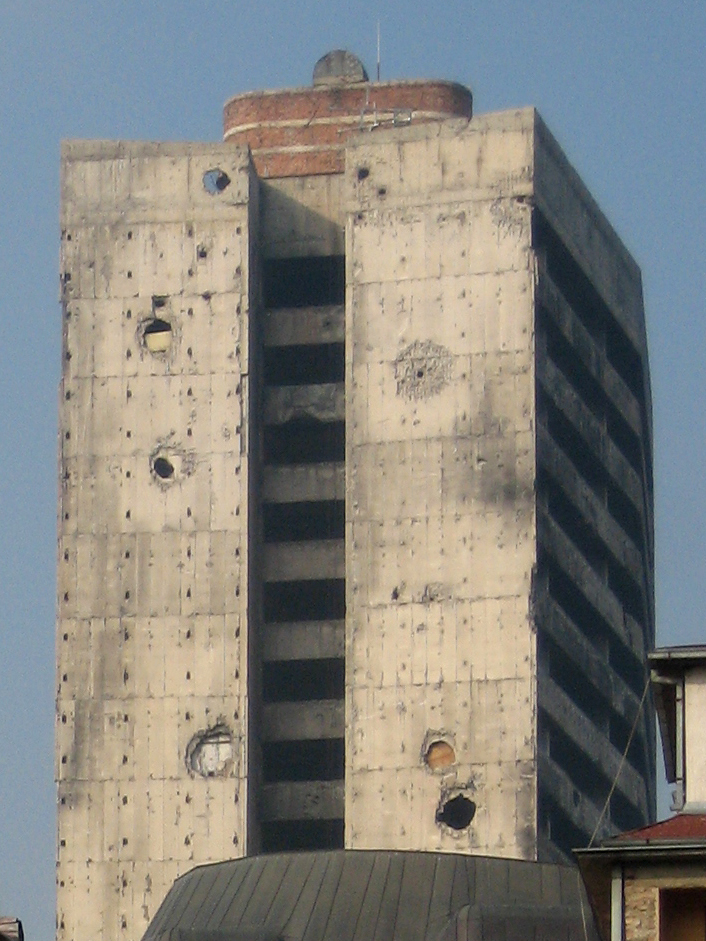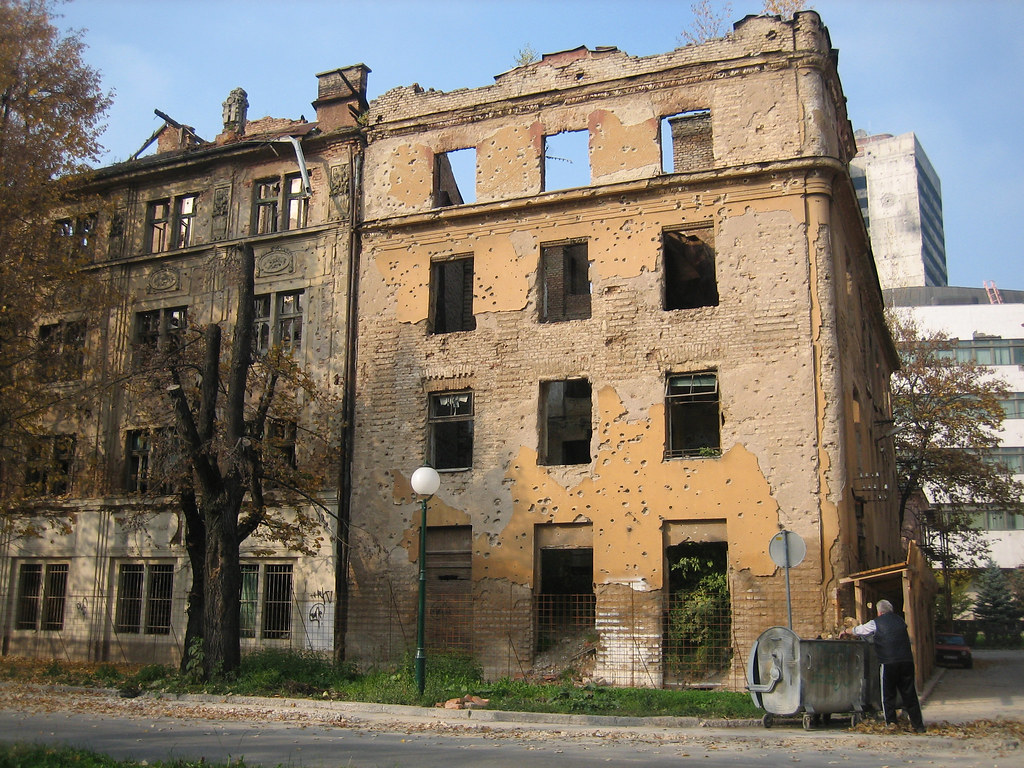Reminders of war, 10 years later




Clockwise, from top left: A mortar shell impact crater with shrapnel spray, a common sight beneath your feet. Those that caused casualties are filled with red paint and called "Sarajevo roses"; inhabited appartment block riddled with bullet holes; one of Sarajevo's few tall buildings, shelled out; man rakes fall leaves in front of destroyed buildings.
God designed Sarajevo for a siege in modern warfare. Its orange-rooved buildings are bunched together amongst narrow alleys, surrounded on all sides by green hills with perfect vistas. One day driving into town, I stopped at a popular outlook and wondered at the marvelous view. I was told it was formerly a primary artillery position and, indeed, watching a war documentary the other day I jumped up as I recognized the very spot, this time featured in footage of enormous guns thumping away rather than as a tourist viewpoint. It is strange to stand there and imagine that instead of admiring the landscape, it instead occurred to someone to think that this would be a great vantage point from which to lob explosives at defenseless civilians.
Approximately half a million shells were fired into Sarajevo during the 4 years of the war. This amounts to around 1 shell per resident. 12,000 people were killed and 50,000 wounded. It was the longest siege in the history of modern warfare. If there were any doubt as to whether the siege was a war crime, one need only listen to the audiotape of Bosnian Serb General Ratko Mladic issuing the order to "Target Muslim neighborhoods - not many Serbs live there. Shell them until they're on the edge of madness."
Sarajevo tourist guides tell visitors that it was the policy of the Serbian Army to kill only a few civilians every day, lest they attract too much international media attention. Indeed, when large massacres took place, it was often the result of one bomb in peculiar circumstances, as it was with the Sarajevo "market square massacre" when 68 civilians were killed because the shell happened to explode on a plastic awning a dozen feet above the ground, spraying hot shrapnel over a crowded marketplace. For some reason, the world is capable of differentiating between 68 killed in one day and 1 killed each day for 68 days. Indeed, the "market square massacre" prompted worldwide media attention and gave Clinton the public backing necessary to intervene. At that point, approximately 200,000 people had already died in the war.
Sarajevo buzzes with the sounds of construction work. The city is definitely on the mend, but war damage persists. I wonder whether they should leave some of it as it is. Of course, it would be impossible for the residents or their children to ever forget, but visitors should be reminded lest Sarajevo become another Dubrovnik: a cleaned up, smiley-faced, tourist dollar machine. Presently, the tourism industry is stagnant and most foreigners you meet are working in development agencies or for governments. But mark my words, 10 years from now Sarajevo will be bustling with tourists, just as it was when it hosted the Olympics in 1984. It's as if people still believe there's a war going on here, an ignorance about which I have heard many Bosnians profess deep bitterness. Indeed, my Canadian friend joked before I left home: "Try not to get shot!" But in fact Sarajevo is safe, cheap, lively, beautiful, and each footstep is soaked in history. One day soon it will rise again.

1 Comments:
You're right. I visited Sarajevo last fall as a tourist, and the war damage is largely cleaned up. I rec'd it to all my friends and family. One of the most beautiful and still haunting places I've ever been.
Post a Comment
<< Home